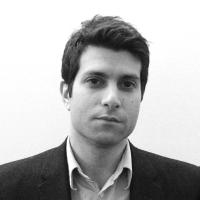There may be more secret waiting lists at Department of Veterans’ Affairs hospitals, like the ones that allegedly hid delays for veterans’ treatment and may have led to dozens of preventable deaths. The Department of Veterans’ Affairs Inspector General told a Senate panel Thursday that he had uncovered new evidence of inaccurately reported wait times at VA facilities—and that could mean more secret lists. So far, the IG said, he had not found any veterans who died due to wait times, but his investigation was ongoing.

Three weeks ago, word first broke of a secret wait list for care at the Phoenix VA hospital. Since then, similar allegations have emerged from five other facilities, including ones in Cheyenne and San Antonio. “Since the Phoenix story broke in the national media we have received additional reports of manipulated waiting times at other VHA facilities,” Richard Griffin, the VA’s inspector general, testified. “In response we have opened simultaneous reviews at several other VHA facilities.”
Grilled by the same bipartisan panel earlier in the day, VA Secretary Eric Shinseki said he had not seen evidence of systematic book cooking in the VA, only “isolated incidents.” The incidents reported so far may be isolated from the departmental headquarters in D.C. but they have spread across facilities and state lines. There is a clear pattern to the claims of wrongdoing, a line that can be drawn from San Antonio through Phoenix to Cheyenne. In each location VA officials have reportedly manipulated records to make it seem like veterans were receiving care when they were actually still waiting, buried under paperwork.
Shinseki said he was “mad as hell” about the allegations of abuses, but in further testimony he deflected direct questions with vague answers. Shinseki maintained that he would wait for the results of the IG investigation before announcing any major reforms but had a hard time answering for how his department missed earlier signs of patient wait time problems that came out years before the Phoenix story.
Both Democrat and Republican senators at the hearing repeatedly questioned Shinseki about the history of reports detailing scheduling issues and doctored records within the VA. They asked why multiple warnings about these issues had failed to initiate changes that might have prevented the cases like Phoenix, where it’s alleged that veterans died waiting to receive treatment.
“VA’s leadership has either failed to connect the dots or failed to address this ongoing crisis, which has resulted in patient harm and even death,” the committee’s senior Republican, Sen. Richard Burr (N.C.), said.
As the Senate hearing repeatedly emphasized, the scandal over the VA’s difficulty providing timely care to veterans and accurately reporting wait times, has been years in the making.
“These recent allegations are not new issues. They are deep, system-wide problems, and they grow more concerning every day,” said Sen. Patty Murray, a Democrat from Washington state.
The Daily Beast has reported on the warnings of manipulated wait times and delayed treatment in the VA system that appear to have gone unaddressed before the recent Phoenix case turned the issue into a national scandal.
Though the panel was not overtly partisan in its approach to questioning Shinseki, some divisions emerged. Democrats had harsh criticism for the VA’s failures but only Republican senators explicitly questioned the secretary’s leadership and the integrity of his agency’s investigation.
Sen. Jerry Moran, a Republican from Kansas, called the VA-directed audit “more damage control than solving the problem.”
Asked directly by Republican Senator Dean Heller why he shouldn’t resign, Shinseki replied, “I’m here to accomplish a mission… We’ve done a lot to make things better. We’re not done yet.”
The senate panel offered little explicit support for Shinseki but some tacit backing was apparent in statements made by Democrats like Sens. Jon Tester and Independent Bernie Sanders, the committee chair. Sanders opened the hearings talking about the massive size of the VA organization and how it performs well given the scale of its operation, while both he and Tester, who has publicly endorsed Shinseki’s leadership, warned against a rush to judgment.
A panel of the country’s largest veteran’s service organizations offered a broad critique in testimony that expanded beyond the hidden wait lists to larger structural deficiencies in the VA.
Shinseki has held regular meetings with many of the veterans’ organizations on the panel and reportedly stayed on the floor after his own testimony to hear their concerns.
If the session was meant to allay the groups’ concerns, it didn’t work. After the hearing, the Iraq and Afghanistan Veterans of America, which has a broad membership base among younger veterans, released a statement that read, “Secretary Shinseki did not restore confidence that VA senior leadership is responding with action and not just concern. Our members are outraged. And we need to see a bold plan to address these allegations.”
None of the veterans’ groups, including the conservative American Legion, which has called for Shinseki to resign, endorsed the idea of replacing centralized, VA-provided care with a private option. Republican senators have repeatedly floated the idea of privatizing the VA’s healthcare system. Veterans’ organizations on the panel endorsed a limited private care option but warned that it shouldn’t take away from the VA’s budget or its mandate to be the primary healthcare provider for veterans. Carl Blake of the Paralyzed Veterans of America argued that veterans with certain chronic injuries and demanding physical condition who now receive care might not be able to find private specialists outside the VA to treat them. The problem, he stressed, was getting the veterans into the VA’s healthcare system.






